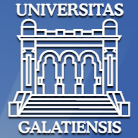Detailed introduction of the Lower Danube University of Galati (University Dunarea de Jos of Galati):
Introduction and Overview
The Lower Danube University of Galati is a public university located in Galati County, Romania. It is a center of academic excellence in the southeastern region of Romania, focusing on cultivating professionals in many fields and has domestic and international openness.
History and Establishment
The history of the university can be traced back to the Land Improvement Institute established in 1948, and then went through the Mechanical-Navigation Institute, Technical Institute, Polytechnic Institute, and Educational Institute. In 1974, it officially became the University of Galati according to the decree of the Council of State, and was renamed the Lower Danube University of Galati in 1991.
School Strength
Teaching Staff: It has about 1,000 teaching staff.
Student size: More than 12,700 students are enrolled each year, of which more than 2,600 are international students, and about 3,000 students participate in other forms of training, such as medical residency training, teacher training, graduate training, career conversion training, and preparatory classes for foreign students.
Research achievements: The school actively promotes scientific research development, encourages the creation and development of various research projects, and its scientists and students often publish results in well-known research journals, participate in many international research projects, and host international conferences.
Institutional nature
Public university.
Educational philosophy
Focus on cooperating with students at all levels to carry out basic and applied scientific research, emphasize the cultivation of students' innovative and practical abilities, and encourage students to actively participate in scientific research activities and social practice to meet the needs of social and economic development. At the same time, advocate moral and ethical principles in scientific research, and strive to cultivate, develop and motivate human resources.
Key laboratories and disciplines
Key laboratories: The school has 35 research facilities, which provide good conditions for scientific research, but there is no detailed public information about specific key laboratories.
Advantageous disciplines: There are certain disciplinary advantages in engineering, medicine, pharmacy, computer science, social sciences, economics and other fields. Among them, some majors in the field of engineering, such as naval engineering and food industry engineering, are unique in Romania; the fields of medicine and pharmacy have expanded teaching and research through cooperation with Enna, Italy; computer science focuses on cultivating students' programming and system design capabilities; social sciences and economics have trained a large number of talents for local and regional social and economic development.
Faculty
The school has 14 colleges, including the School of Engineering, the School of Computer Science, the School of Automation, Computer Science, the School of Electronics and Electrical Engineering, the School of Naval Architecture, the School of Food Science and Engineering, the Braila School of Engineering and Agriculture, the School of Science and Environment, the School of Literature, the School of Sports and Sports, the School of Economics and Business Administration, the School of Social, Political and Legal Sciences, the School of Medicine and Pharmacy and the Enna Branch in Italy, the School of History, Philosophy and Theology, the School of Arts, and the Cross-Border School of Humanities, Economics and Engineering Sciences in cooperation with the State University of Cahul in the Republic of Moldova.
Rankings
Ranked 1501+ in the 2025 THE World University Rankings, 1001+ in the 2024 THE Engineering Rankings, 1001+ in the Physical Sciences Rankings, and between 401-1500 in the 2024 THE Impact Rankings. Ranked 182 in the 2022 QS Emerging Europe and Central Asia.
Expenses
Tuition fees vary by major and degree level. Generally, undergraduate tuition fees are around 2000-4000 euros/year, and master's and doctoral tuition fees are around 3000-6000 euros/year. Specific fees can be found on the school's official website.
Campus Environment
Campus Facilities: The school has 3 student campuses, providing 2,800 student accommodation beds, 4 cafeterias, the university library has a collection of more than 600,000 books, 12 reading rooms, a student infirmary and sports facilities, including a stadium, etc.
Cultural atmosphere: The Student Cultural Center organizes various cultural, artistic and sports activities, such as folk music festivals, break dance festivals, competitive fishing and fashion festivals, enriching students' extracurricular life.
-

Grigore T. Popa University of Medicine and Pharmacy
-
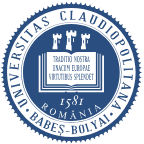
Babes-Bolyai University
-
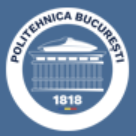
Politehnica University of Bucharest
-
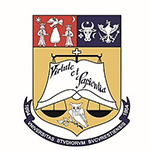
University of Bucharest
-
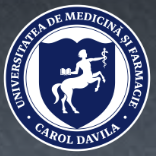
Carol Davila University of Medicine and Pharmacy
-
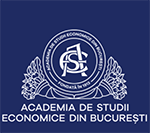
Bucharest Academy of Economic Studies
-

Technical University of Cluj-Napoca
-

1st December 1918 University of Alba Iulia
-

West University of Timisoara
-
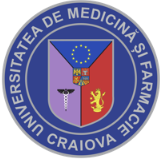
University of Medicine and Pharmacy of Craiova
-

Mesoamerican University
-

Istmo University
-

Mariano Galvez University of Guatemala
-

Regional University of Guatemala
-

Galileo University
-

Francisco Marroquín University
-

Rafael Landívar University
-

University of the Valley of Guatemala
-

University of San Carlos of Guatemala
-

Technological Institute of Tlaxcala Plateau
-

Golfo University
-

Technological University of South Sonora
-

Technological University of Huejotzingo
-

Tizimín Institute of Technology
-

Chilpancingo Institute of Technology

